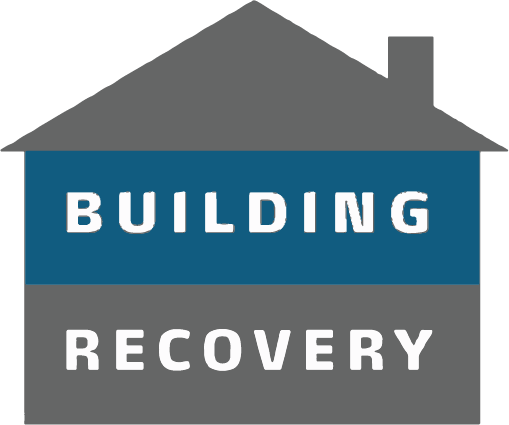Interview
with Hollie CooperThis interview covers the structure of the Building Recovery Course as it is designed.
This hour long interview has been broken into segments to help you find your point of interest
Introduction
This is the initial introduction with Dave introducing Hollie Cooper, a psychologist and therapist who wanted to know more about this whole approach.
Although we have the same name Hollie and I are not related.
The Recovery Box.
This is one of the most useful of the Building Recovery methods. It is something that is not only useful theoretically and practically, but also provides a possibility of including a ‘craft’ element by making and personalising the boxes when working in groups.
Recovery as Relationship.
The non-medical model defines recovery as when your relationships with everything and everybody are healthy.
This may look quite different from the methods and approaches you have tried before. It keeps us out of the trap of success and failure.
Setting up a Group
Here are some initial questions about the group approach and what challenges people face when considering this. Things like atmosphere and informality are discussed.
The group structure is explained more fully in the section for practitioners.
Week One
Getting into the structure of the course which is delivered in eight sessions. This is the first look at Week One. It’s so important that we build relationships with the group members and take time to understand their issues and situations.
Planning – The Bullseye
Here we discuss one of the main difficulties poeple have when planning their recovery. The aim, or the bullseye is often ‘abstinence’ but this is a terrible aim! Dave explains what is a much better aim for our progress.
Planning – The grieving process
It is well known that we begin a grieving process whenever we lose something important to us. Recovery is no different as we see here. We must allow for the fact that we will be grieving what we have lost, even if we hate it or can’t wait to see the back of it!
Abstinence is not recovery
Once we have built our foundation according to the definition we have, we must be careful not to elevate this achievement above what it really is. It is not a finished building! It’s just a good foundation on which to build something substantial.
Week One- Design
This is the first look at the BIG THREE of the first two weeks of the course, namely, Design, Cost and Location. Here we discuss Design which is a crucial factor in our planning. Here we look at the history of ur groups efforts at recovery.
There is no more important issue when attempting a recovery is that you build something of your own design. It is a huge part of authenticity and becoming yourself.
Week Two – Location
This is the second look at the BIG THREE of the first two weeks of the course, namely, Design, Cost and Location. Here we discuss Location which is another crucial factor in our planning.
In this metaphor location is understood as relationships. In other words who are you going to be living next to? Who are you gong to be moving away from?
Week Two – Cost
This is the third look at the BIG THREE of the first two weeks of the course, namely, Design, Cost and Location. Here we discuss Cost which is another crucial factor in our planning.
In this approach cost is understood as something more than money. When we want to make progress there is always a cost. These costs can be relationships we need to let go of. It can be accepting that there are things we can no longer do or find acceptable in ourselves.
Week Two – The Trap
Here we touch on some of the most important aspects of the course and this whole approach. The trap of success and failure is one of the most common things I see in people attempting recovery. And it all starts with the mistaken idea of what we should be aiming for!
If you have abstinence as your bullseye, think again! This connects with the cycle of addiction that forms part of the work of our course.
Introduction to the Second Stage
Defining the Foundation
Here we touch on some of the more subtle aspects of the foundation, such as the way we have designed a floor plan for our new design and that floor plan can be used to identify issues in the different rooms. Another reminder that abstinence is not recovery.
Week Three and Four
Foundation building
Stage two is covered in the third and fourth weeks of the course. Everything we are going to build from now on will stand or fall based on the quality of this foundation. The two ideas we use are solidity and stability. Solidity is about the strength of the foundation to take the wieght of what you are going to put on top of it. Stability is about the foundations ability to remain functional when the weather changes and you face challenges that are beyond what you would normally expect.
Week Three and Four
Stability and Solidity
Here we touch on some of the more subtle aspects of the foundation, such as the way we have designed a floor plan for our new design and that floor plan can be used to identify issues in the different rooms.
More on the idea of using the design of our rooms to identify where the foundation is not solid.
Boundaries
Where does our property end and the others start? In our building we have walls, doors and fences. These things all form boundaries in our relationships as well as boundary walls between our different rooms. This helps us to make sense of how we go forwards in our recovery progress.
What is our responsibility and what is others responsibility. The idea of our property boundary helps us sort this out. Especially when we use the idea of a floor plan that forms another part of our ‘craft’ when we draw this up.
Exits
The Front door or garden gate of our property is where we might make an ‘exit’. This is one of the main ideas in the systemic or ‘non medical’ approach. It forms the way we understand the difference between someone who is considered ‘normal’ and someone who has the vulnerability around addictive behaviour.
Boundaries, doors and gates form the idea of not only having a recovery building but also being able to ‘exit’ from it. The addict brain is also discussed.
Going at your own pace
Time is hugely important in recovery. And we should always be aware of the pace that someone is able to go at. Growth and progress cannot be imposed on people who have been struggling just to keep going, in some cases for years.
Here we look at the idea of courses that are time limited and the way they can assume growth when often, they just leave people behind.
Is this a Group or Course?
Here we consider the idea of how to present the course. The two alternatives are as a group that meets reuarly with no time limit, or a course that has a definite start and end point. The answer is to think about your resources and team commitments and to run it based on that.
Of course these different approaches bring different issues.
Week Five and Six
Ground Floor
Relationships and Communication
Here we take the first steps into the ground floor of our building. And we must face the challenge of ‘normality’. What is it? What does it mean? Here we discuss that it is actually easy to define and to understand.
The five percent rule
How do we make progress? How about just doing a five percent increase? The progress is ensured when we make these small changes. Not going so fast that we overwhelm ourselves, rather bringing about progress at a pace that we can handle, and those around us can too.
The level of challenge is different for everyone. Your building at the right pace when you can feel the challenge, but it’s not overwhelming you.
Are you Building too fast
or Building too slow?
Are you building your recovery too fast or too slow? This is a useful reflective question that becomes more and more important the longer you have been on your journey.
This starts to become useful by the time we are on the fifth week of the course. In this section we touch on the problems with going too fast or too slowly.
The Relationship excercise
Connecting to the idea of ‘cost’ in our recovery, we are now asking ourselves what needs to change in the area of relationships. Here we introduce the ‘relationship exercise’ which encourages us to consider how we feel ‘about ourselves’ after we have beearound certain people. Anyone who scores less than five (out of ten) is someone we should consider restricting the amount of time we spend with them.
Week Six – Communication
The Code
Communication is the focus of the sixth week. In this section we look at another of the main methods in this approach. It’s called the ‘code’. It is a systemic technique that helps us in one of the main shifts in recovery, namely the shift from indirect to direct communication. We also look at the idea of meta-state theory. Stepping back to a place where we can commuicate what we need to say.
The First Floor
Relationships
In this section we start to consider the change in perspective when we get up on the first floor. The main changes are in your relationships, your communication, your expectations of yourself.
What was the ceiling of our ground floor becomes the floor of the first floor. So the peak of our expectation becomes the starting point of what we are looking at on the first floor.
The Baby
The ‘Baby’ is one of the main methods in this approach. Here we look at the way that any development echoes or mirrors the life of a new baby. There is a baby stage, a toddler stage and a child stage. Each of these stages are mirrored in the recovery process. Understanding that our priorities change over time is made more coherent when we understand which of the four stages of recovery we are in.
The First Floor
Connections
This section is the first look at the systemic definition of recovery. By not using the moral or the medical models we can define recovery as when your relationships with everything and everybody are healthy. The recovery journey then becomes a journey towards authenticity and integrity.
This section also includes a look at the way that our recovery develops as we climb the stairs to the ‘first floor’. Here we accept that disappointment and failure are a normal part of our experience and that we can recovery and recoup our energy levels after we have faced these things.
Win Win Win
How do we know what is the best thing? What tells us that something is the very best thing? The touch stone is that it must be the very best thing for you, the other person in the relationship and the world at large, whatever system you are working with. Only by using this method can we reach a win win win position!
Recovery brings responsibility. This can be very scary!
First Floor
Self Determination and Agency
In this section Dave uses a story from real life to explain the value and importance of self determination and agency. Often people spend most of their lives feeling that things are being imposed upon us. Once we understand the value of self determination and the idea that we are making choices all the time, we can shift from a world of frustration to a world of possibilities.
Week Eight
Outgrowing your difficulties
In this section the definition of recovery as personal growth development and maturity is discussed. The idea of growth is universally accepted and held by all the major philosophies and religions. Psalm 40 from the Christian Bible is used here as just one example of this principle. Which is the idea that you will always struggle to recover if you stay where you were. Growth and progress is needed in order to give yourself a chance.
First Floor
The changing perspective
Here we look at the changing perspective once we are on the first floor. We also discuss the issue of what we do with late starters etc. Trainers need to decide if they are going to run a group or a course construction.
Isolation
The Attraction of the Dead World
In this section Dave uses the tragedy of a murder to explain the difference between being in the living world or the dead world. Addiction can be thought of as the temptation of the dead world, and recovery as the courageous journey back into the living world. It turns out that isolation is even worse than we thought!
First Floor
Dreams and Visions
What is your dream? Do you allow yourself to know your own vision? Here we start to think about the difference between the ground floor and the first floor. The importance of only building on a firm foundation.


